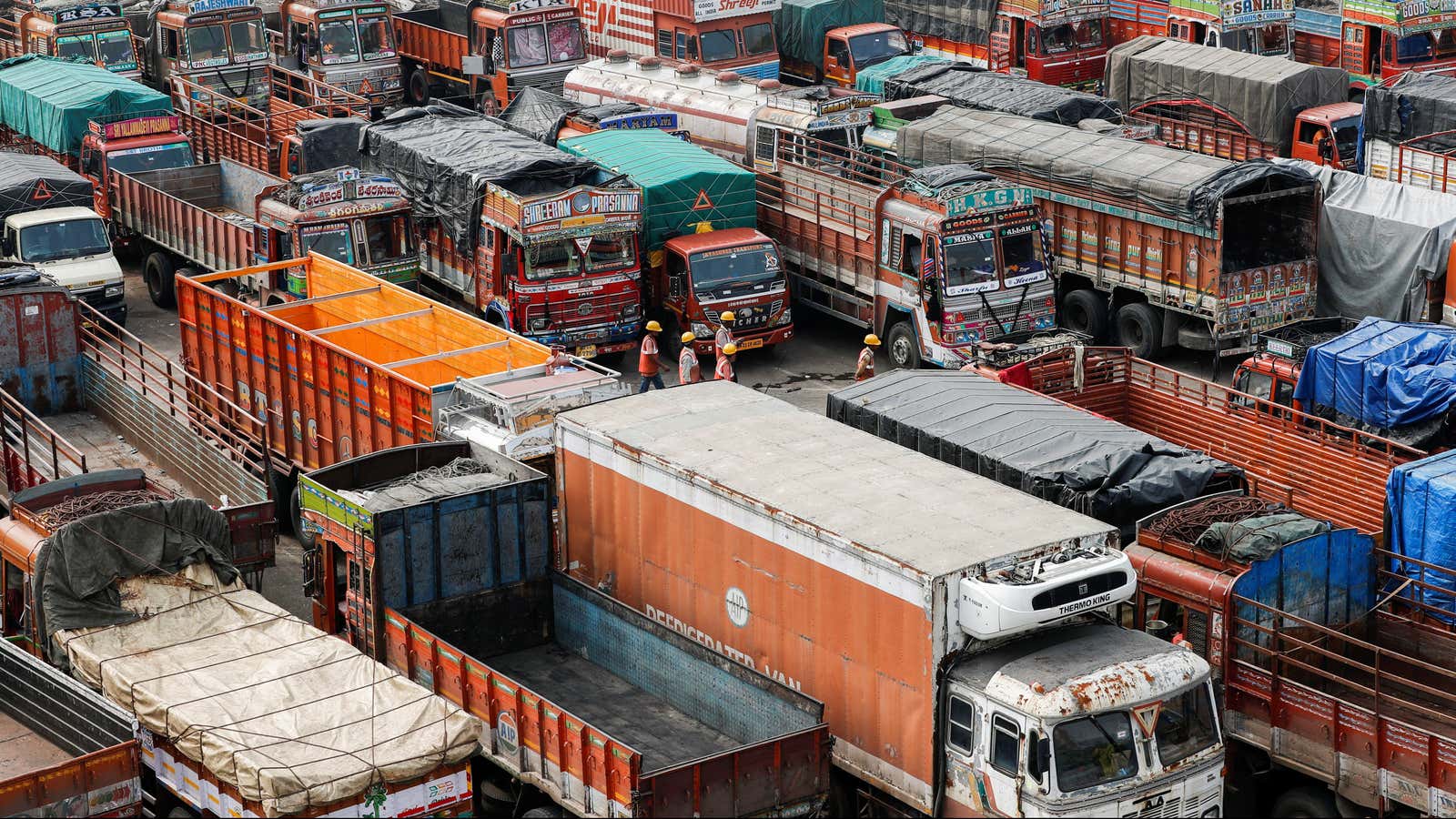India’s manufacturing sector is growing steadily, even though inflation threatens companies’ bottom line. That’s thanks in part to the sharpest rise in exports in 11 years, though domestic demand remains strong, too.
No matter where they are, consumers are now burdened with high costs tacked on after goods leave the factory. India’s output prices jumped at their fastest pace since Oct. 2013, according to new data from S&P Global (pdf). That’s a sign that inflation will likely remain high in India in the coming months, pushing the cost of living higher and out of reach for some Indians.
Output price inflation measures changes in how much products cost before they’re sent to wholesalers and retailers.
“There was little movement in the rate of input price inflation during May, which remains historically high, but output charge inflation surged to its highest in over eight-and-a-half years as companies continued to transfer additional cost burdens to their clients,” noted Pollyanna De Lima, economics associate director at S&P Global, in the press release.
The costs for the country’s manufacturers have been building for more than a year. Inflation has stayed above 10% since May 2021; in April, India’s wholesale inflation rate hit 15.08%—the highest level since 1991.
“…[The] likelihood of [India’s inflation] remaining elevated over the next two or three quarters could dent consumer sentiment while also squeezing profit margin for producers,” economists at QuantEco Research noted in a research report.
A rocky road for India’s economic growth
India’s GDP grew at a slower pace, to 4.1%, in the quarter that ended March compared to the same quarter the previous year. It was weighed down by skyrocketing commodity prices and restrictions around the omicron wave of covid-19.
Moving forward, experts believe that elevated commodity prices, supply chain disruptions, and interest rate hikes by major central banks may further hamper India’s economic growth. “The visibly weaker activity momentum heading into FY23, elevated inflation, negative rural real wage—all point to a weaker growth print during the current year,” Kunal Kundu, India economist at Societe Generale, told Reuters.
These new numbers make the International Monetary Fund (IMF) more likely to further downgrade India’s GDP from an earlier estimate of 8.2% in April. This may affect the bottom line for Indian companies that rely on exports.
